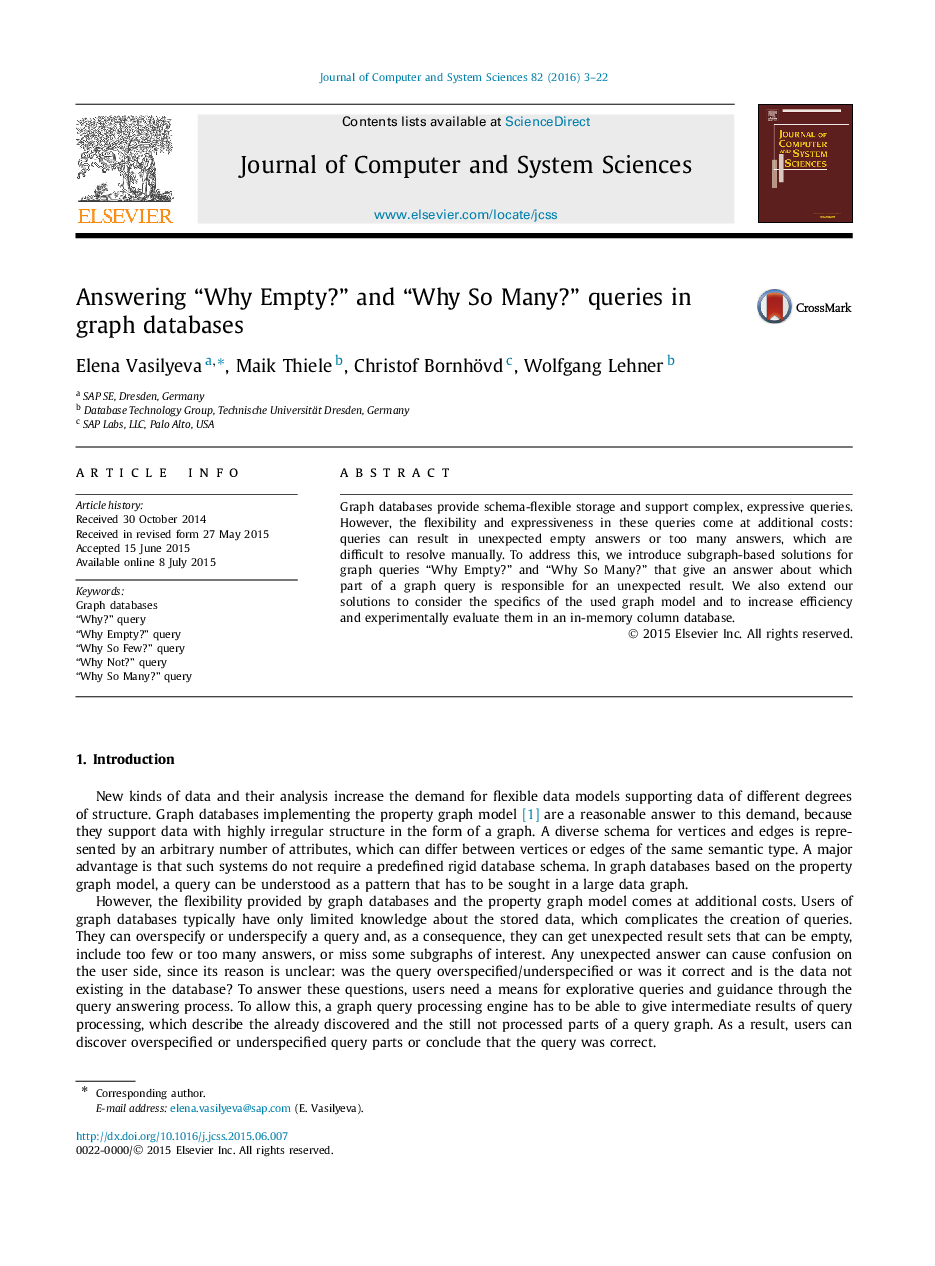| Article ID | Journal | Published Year | Pages | File Type |
|---|---|---|---|---|
| 429487 | Journal of Computer and System Sciences | 2016 | 20 Pages |
•We propose “Why?” queries to handle unexpected results in graph databases.•We develop subgraph-based solutions for “Why Empty?” and “Why So Many?” queries.•Processing of weakly-connected graphs and spanning tree increases quality.•Single run and restart strategies increase performance.
Graph databases provide schema-flexible storage and support complex, expressive queries. However, the flexibility and expressiveness in these queries come at additional costs: queries can result in unexpected empty answers or too many answers, which are difficult to resolve manually. To address this, we introduce subgraph-based solutions for graph queries “Why Empty?” and “Why So Many?” that give an answer about which part of a graph query is responsible for an unexpected result. We also extend our solutions to consider the specifics of the used graph model and to increase efficiency and experimentally evaluate them in an in-memory column database.
